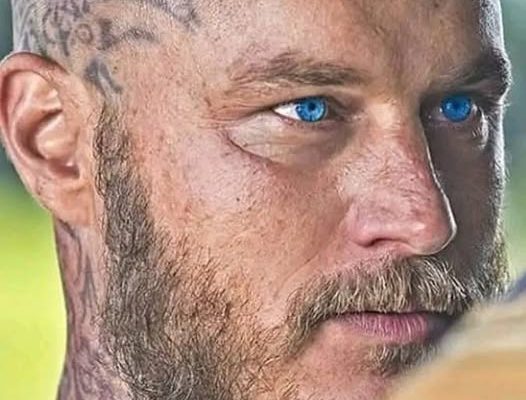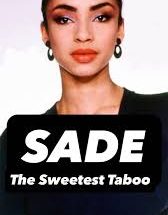The announcement of Netflix’s upcoming series The Raven’s Oath has ignited a firestorm of excitement and speculation across the entertainment world, particularly because of one jaw-dropping revelation: Ragnar Lothbrok, long thought gone from the Viking saga, is making his return. Fans of the original Vikings series had long debated whether Travis Fimmel would ever reprise his role, considering the character’s dramatic and unforgettable death in season four. Yet, against all odds, the Australian actor is back, and this time he isn’t alone. Gustaf Skarsgård, who portrayed the brilliant yet unhinged Floki, and George Blagden, who played the devout and tragic Athelstan, will also return in roles that promise to test the boundaries between myth and reality. The show, slated to stream globally on Netflix, has been pitched as a spiritual successor to Vikings rather than a direct continuation, and its central theme revolves around Odin’s wrath, a divine judgment that forces even the most legendary warriors and believers to face the consequences of their choices.
The return of Travis Fimmel has been kept under wraps for months, a secret guarded with almost mythological care. Insiders reveal that when Fimmel first stepped onto the set dressed once again as Ragnar, the atmosphere shifted instantly. Crew members reportedly felt chills, as though they were watching history fold in on itself. The creators of The Raven’s Oath have teased that this Ragnar is not the same man viewers remember. Instead, his return is linked to a larger spiritual conflict, one that pits mortals against gods in a struggle that spans not only physical realms but metaphysical ones as well. This has fueled speculation that the story will delve deeper into Norse cosmology than any adaptation before, exploring how mortals grapple with divine powers that are both awe-inspiring and terrifying.
For Gustaf Skarsgård, reprising the role of Floki feels like destiny fulfilled. His portrayal in Vikings was often hailed as one of the most hauntingly nuanced performances in the series, oscillating between genius, madness, and unwavering devotion to the gods. In The Raven’s Oath, Floki’s character is said to be caught in the crossfire of Odin’s wrath, torn between his reverence for the All-Father and his loyalty to Ragnar. Early hints suggest that Floki may serve as both an ally and an antagonist, reflecting his unpredictable nature. His relationship with Ragnar, always a complex tapestry of friendship, betrayal, and reverence, seems poised to take on new layers in this continuation. Fans have speculated whether Floki, who in the sagas is often connected to the trickster Loki, might ultimately be the one responsible for unleashing Odin’s fury, intentionally or otherwise.
George Blagden’s return as Athelstan has been met with equal astonishment. His character, beloved and tragic, was killed in Vikings season three, yet his influence lingered throughout the series, particularly in Ragnar’s psyche. Athelstan’s presence in The Raven’s Oath appears to be tied to themes of faith, sacrifice, and the eternal clash between Christianity and Norse paganism. Insiders report that his character will appear in visions and spiritual confrontations, suggesting that he may serve as a moral compass—or a haunting reminder—for Ragnar as he grapples with Odin’s wrath. Bringing Athelstan back also provides fertile ground for one of the most powerful dynamics in Vikings, the deep yet conflicted bond between him and Ragnar. That relationship, both platonic and spiritual, was at the heart of Ragnar’s internal conflict, and its revival could elevate the new series beyond a standard Viking tale into something far more profound.
The premise of The Raven’s Oath centers on the idea that Odin, long depicted as a wise yet merciless god, has grown weary of mankind’s betrayals, arrogance, and divided loyalties. His wrath, manifested through visions, storms, and the reanimation of fallen warriors, forces Ragnar, Floki, and Athelstan to confront their own legacies. The story unfolds not only in the mortal realm of Midgard but also in dreamlike sequences that pull viewers into the halls of Asgard and the shadowy underworld of Hel. According to early leaks, the show will blur the lines between history and mythology more than ever before, creating a surreal yet grounded narrative that forces audiences to question whether the gods are truly divine beings or manifestations of human fear and faith. This deliberate ambiguity mirrors the themes of the original Vikings, which often balanced legend with historical record.
Travis Fimmel’s involvement has raised intriguing questions about how Ragnar will be portrayed. Will he appear as a resurrected warrior, defying death itself, or as a vision shaped by divine intervention? Some reports suggest that Ragnar will be brought back through Odin’s will, not as a reward but as punishment, forced to relive his choices and confront the blood spilled in his name. This torment aligns with Ragnar’s complex arc in Vikings, where he was never portrayed as a flawless hero but rather as a man torn between ambition, family, and the heavy cost of greatness. His return under the gaze of Odin could represent the ultimate reckoning, both for him and for those who followed him.
What excites fans most is the reunion of these three characters, whose interactions defined much of Vikings’ most memorable storytelling. Ragnar’s pragmatic ambition, Floki’s fanatical devotion, and Athelstan’s conflicted faith form a triangle of philosophies that shaped the saga. Bringing them together under the looming threat of Odin’s wrath opens countless possibilities for drama, betrayal, and redemption. Early teasers hint at intense confrontations, including scenes where Ragnar questions Odin directly, Floki collapses in ecstatic visions, and Athelstan offers a message of hope in the face of annihilation. These scenes promise to deliver both the action and the philosophical weight that made the original series resonate so strongly with global audiences.
Netflix has spared no expense in bringing The Raven’s Oath to life. The production boasts sprawling set pieces, authentic recreations of Norse villages, and battle sequences that promise to rival those of Vikings: Valhalla. Yet the show is said to place just as much emphasis on intimate storytelling, focusing on the psychological and spiritual struggles of its central characters. The music, composed by a team inspired by Norse folk traditions, is expected to blend haunting chants with modern orchestral power, heightening the sense of both grandeur and dread. Visual effects will be used not just for spectacle but to create an atmosphere where the lines between the natural and the supernatural blur, reinforcing the theme of Odin’s wrath as both physical destruction and inner torment.
The announcement has also sparked intense fan theories online. Some believe the series will culminate in Ragnarok, the prophesied end of the world in Norse mythology, where even the gods meet their fate. Others suggest that The Raven’s Oath will explore lesser-known myths, introducing characters such as Hel, the goddess of the underworld, or the Norns, who weave the fate of all beings. The possibility of seeing Ragnar and his companions confront not just Odin but the entire pantheon has electrified discussions across social media, with many predicting that the series could become Netflix’s most ambitious historical-mythological drama to date.
Critics of the idea have raised questions about whether resurrecting Ragnar undermines the emotional weight of his death in Vikings. However, supporters argue that The Raven’s Oath isn’t erasing that moment but recontextualizing it within a mythological framework. In Norse tradition, death is not always the end, and heroes often return in new forms to fulfill their destinies. Thus, Ragnar’s reappearance can be seen as an extension of that cultural narrative rather than a betrayal of the original story. Moreover, the opportunity to see Fimmel, Skarsgård, and Blagden together again is a gift that many fans never expected, making the risk worth taking.
As Netflix positions The Raven’s Oath for a global release, the series seems poised to capture not only fans of Vikings but also new audiences drawn to epic tales of gods, warriors, and fate. The timing is strategic, with the surge of interest in mythological adaptations across platforms, from Greek epics to Arthurian legends. By focusing on Norse mythology and intertwining it with beloved characters, Netflix has a chance to carve out a definitive space in the genre. For Travis Fimmel, this return marks not only a homecoming to the role that defined his career but also an opportunity to explore Ragnar in ways that transcend mortality. For Gustaf Skarsgård and George Blagden, it is a chance to revisit roles that challenged them and left an indelible mark on audiences worldwide.
The anticipation is already palpable. Forums buzz with predictions, trailers rack up millions of views within hours, and fan art floods social media, depicting Ragnar facing Odin beneath stormy skies or Floki offering blood sacrifices in desperation. Some of the most moving tributes come from fans who see Athelstan’s return as a symbol of faith persisting even in the darkest times. The blend of excitement, nostalgia, and curiosity surrounding The Raven’s Oath demonstrates just how powerful the legacy of Vikings remains years after its conclusion.
In the end, what makes this announcement truly groundbreaking is not merely the return of Ragnar, Floki, or Athelstan, but the way it reimagines their journeys in the context of divine reckoning. By confronting Odin’s wrath, these characters step into a narrative that transcends history and enters the realm of myth, where choices echo across eternity and even gods can be questioned. Whether The Raven’s Oath will meet the towering expectations set by its premise remains to be seen, but one thing is certain: the world will be watching, waiting to witness the clash between men and gods, and to see if Ragnar Lothbrok can defy fate once more.



